Chris Conro
TVWBB Fan
So many people have been posting their DIY pizza ovens lately, I'm actually feeling a bit sheepish about posting the one I simply paid for. Major kudos to the DIYers, but I thought this kit offered a lot of versatility, and bought it as a bit of a present to myself around Tax Day.
I assembled it to my older 22" OTS, which is still is fine shape after 5 Midwestern winters outside.
I am excited about the BakingSteel, which can be used as a cooking surface in this configuration, or could be used without the KettlePizza, as a drop-in replacement for a standard cooking grate. I haven't checked yet, but I'm also hoping it fits in the oven! EDIT: it does not.

Nice and shiny for now!

For my first run using the oven, this is the amount and general size of pieces of Royal Oak I used. I arranged the lit coals into a C-shape, with the opening of the C facing the mouth of the oven.
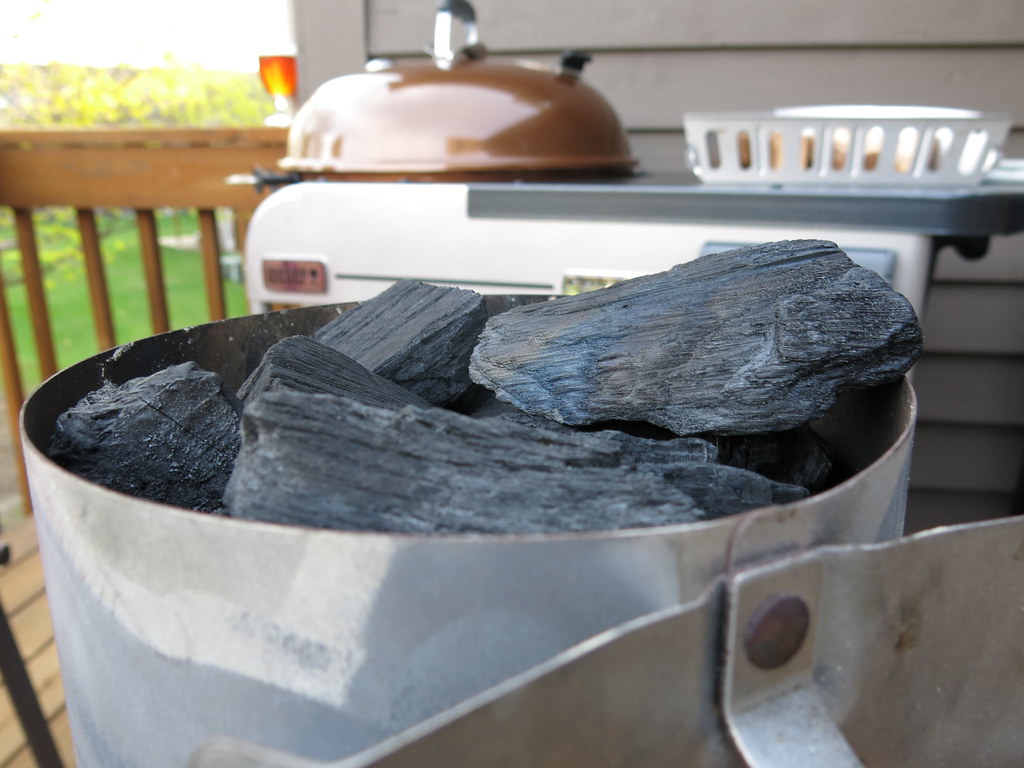
I found this little gem while sorting out some larger pieces of lump to use in this cook. Aint it cute?

Up and running, nice and HOT! The flames are coming from some chunks of oak that are in a CharBasket right behind the pizza stone.
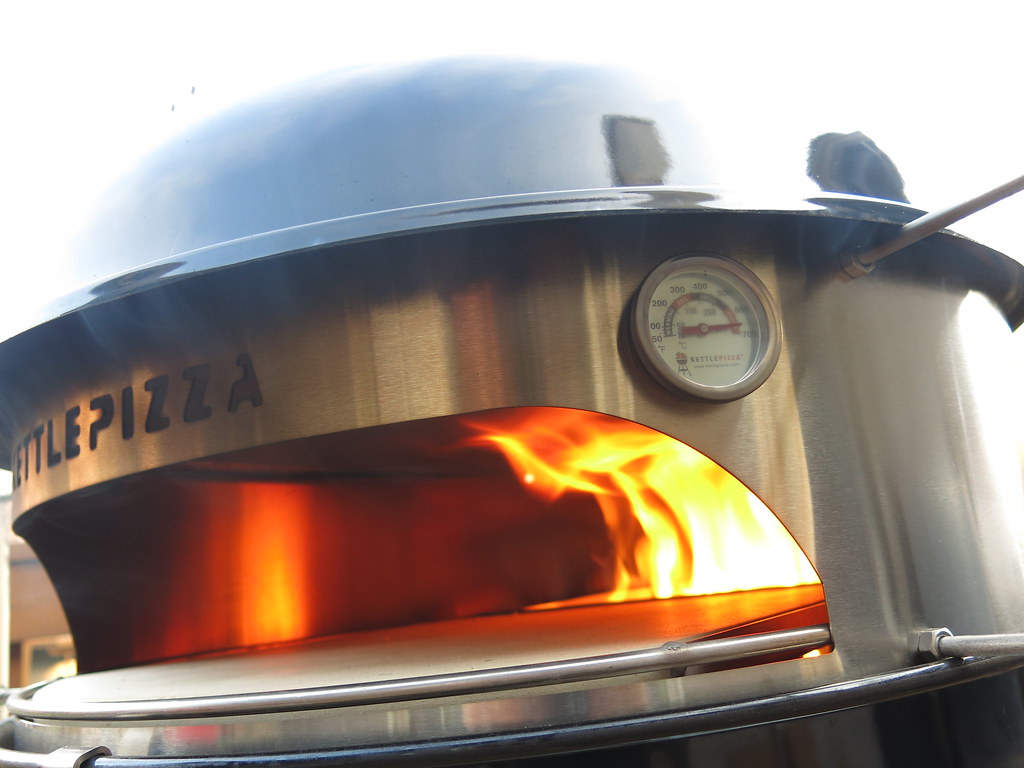
Some of our ingredients. Boars Head natural casing pepperoni is the bomb.
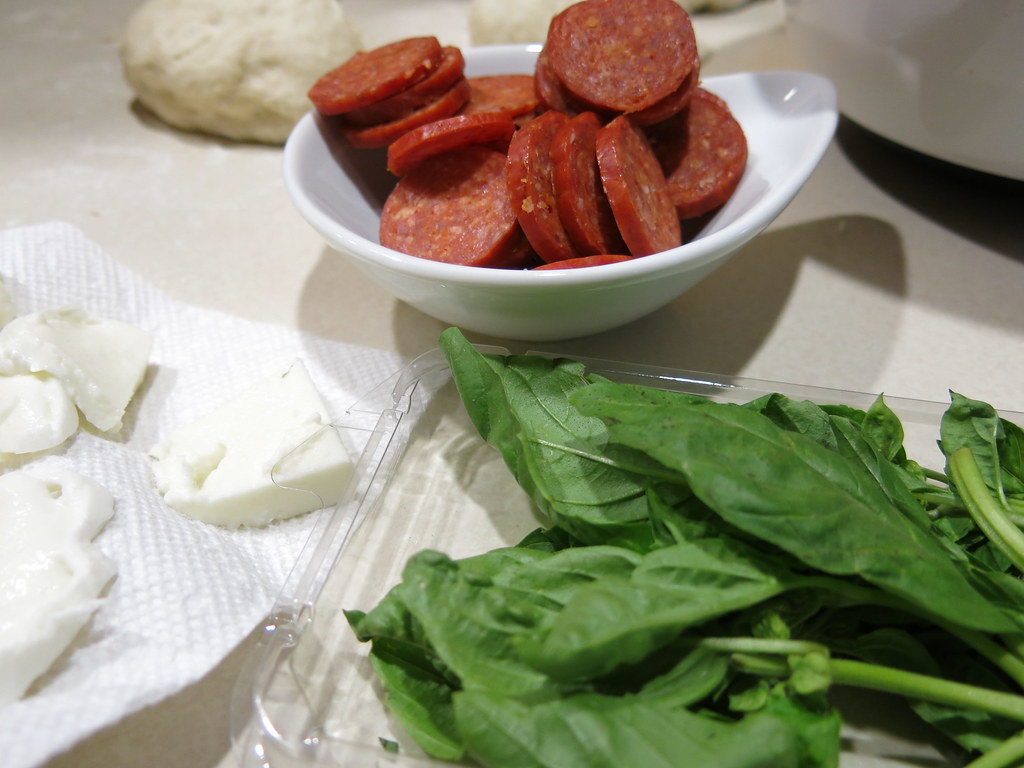
Going in - you can see the temp has already dropped a fair amount.
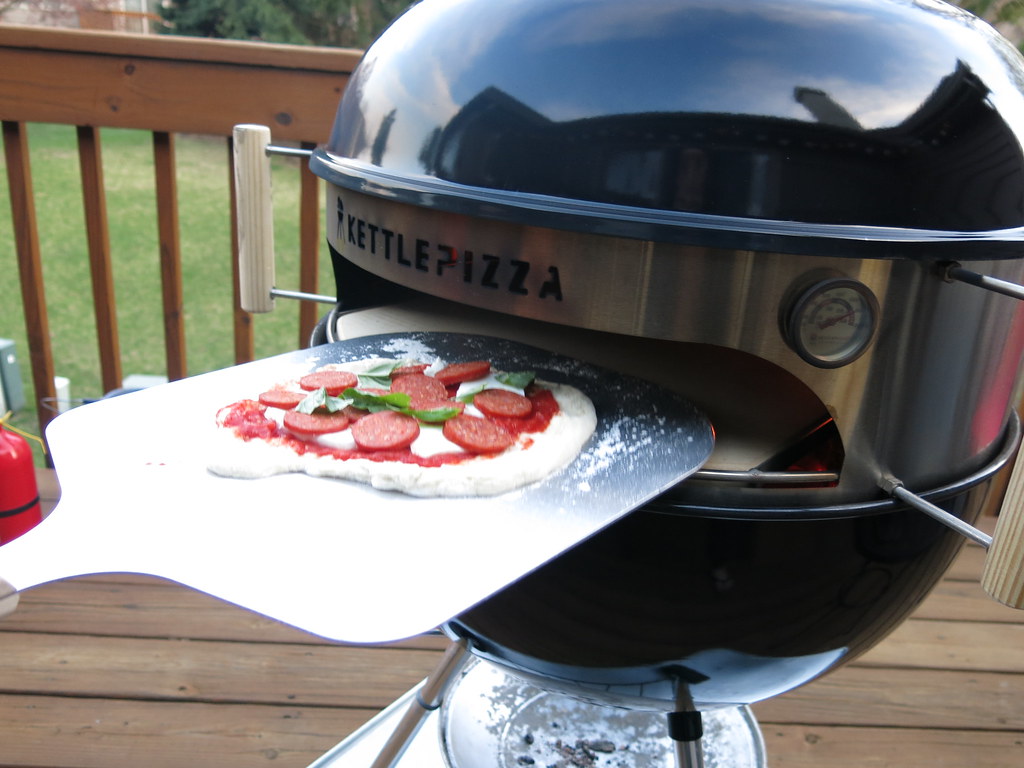
Inside the oven - bottom looking great, but not enough heat or convection to get the top done to my liking.
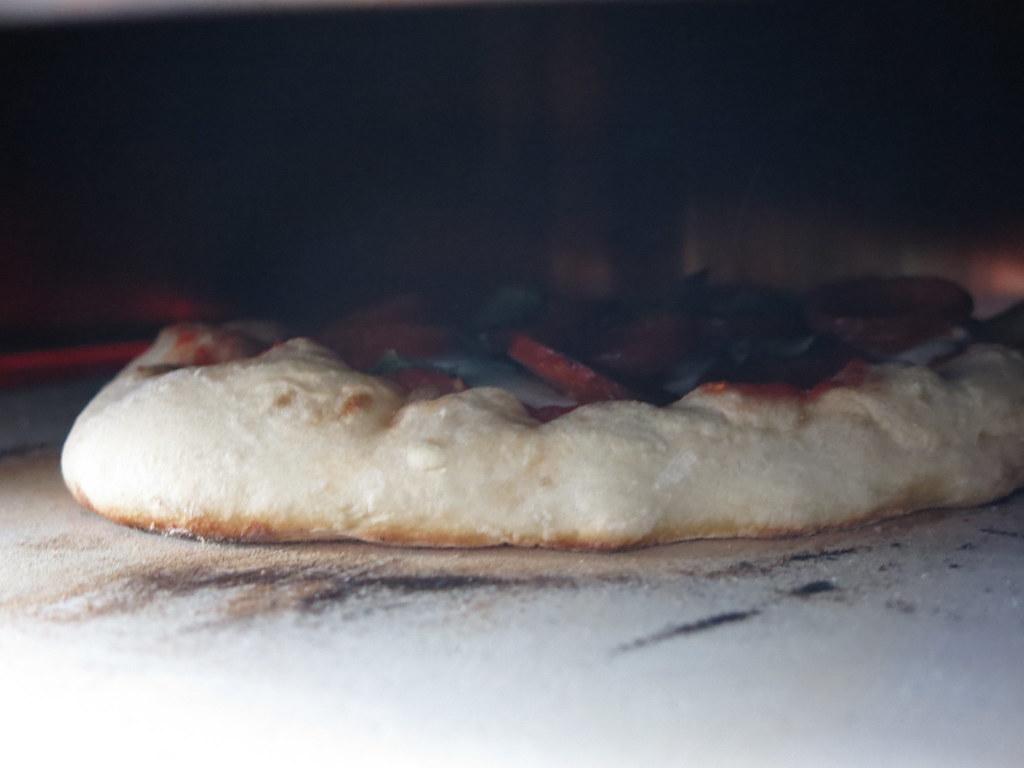
Another pie in the oven, viewed through the opening in the BakingSteel.
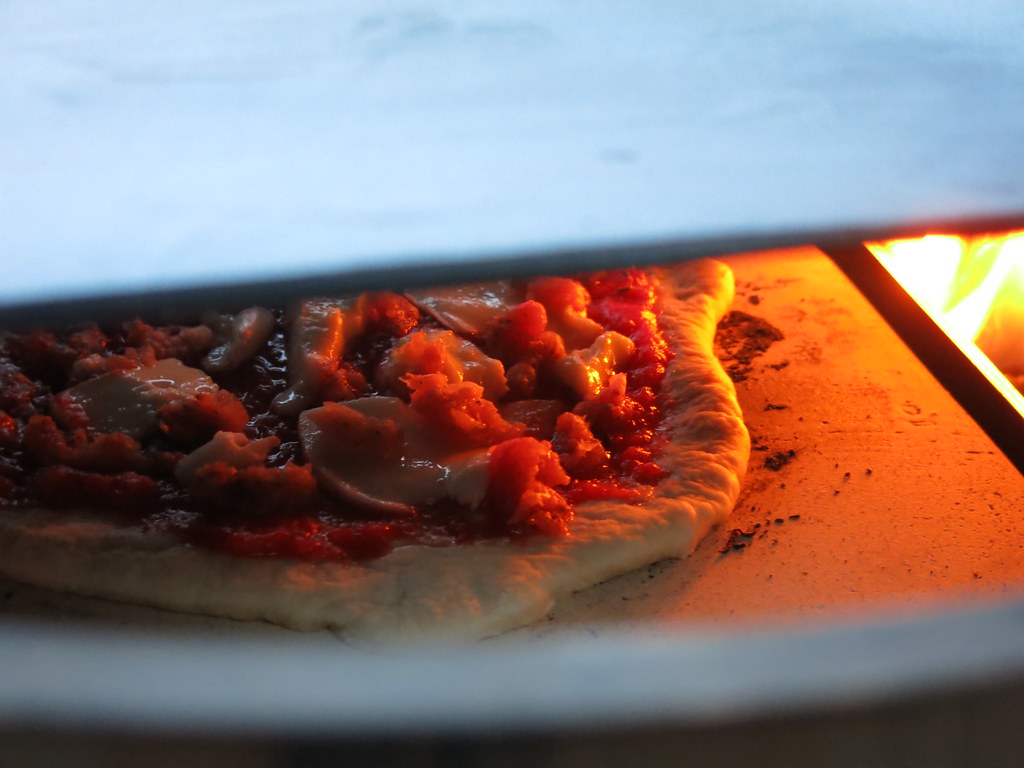
Action shot.
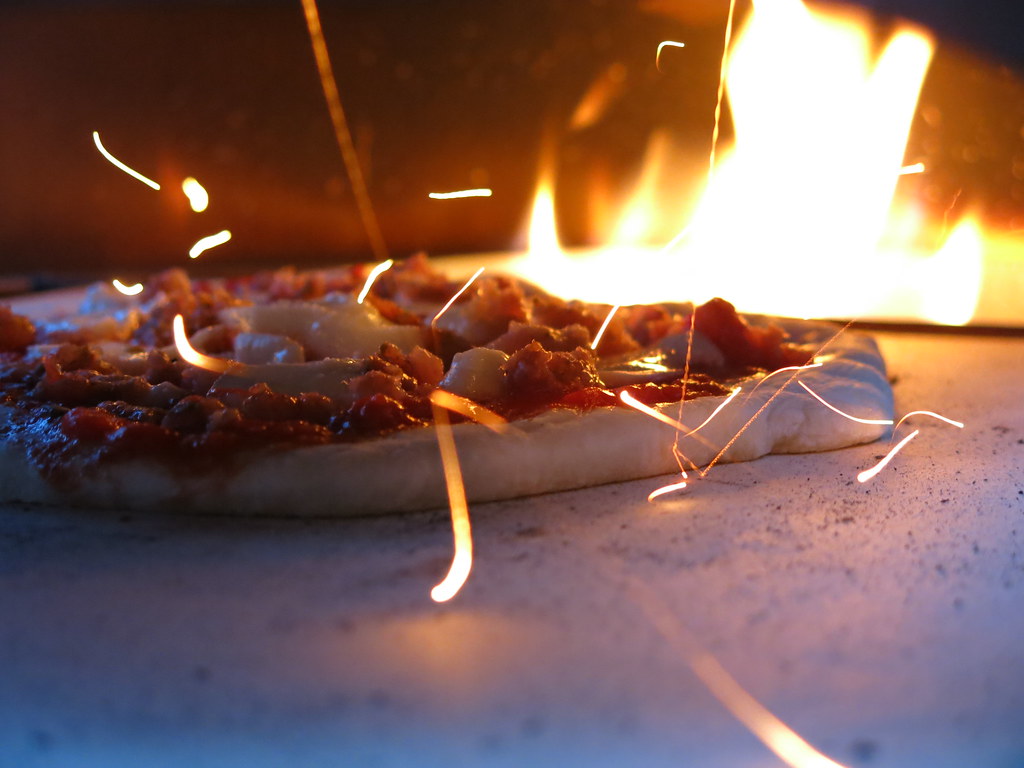
Sorry, no photos of finished pizzas. None came out looking all that swell. We cooked 4 pies, and by the last one, I'd guess the oven was at about 400 - 450. I feel like I learned several things though, and can take those lessons into my next attempt.
- The amount of charcoal I used was enough to get the oven temp above 700F, but only briefly. Next time, I'm using more lit charcoal.
- I think I should cover those openings in the BakingSteel. They are intended for adding more charcoal to the fire, but in operation, they are cavities that allow heat to get in between the BakingSteel and the kettle lid, where it's not doing any good.
- I should have the pizzas closer to oven-readiness when lighting off the KettlePizza, and not spend so much time taking Glamour Shots of the grill with flames coming out of it.
- I'm going to try experimenting with using Comp K instead of or in addition to the lump charcoal I used for this test.
- I've also thought about using aluminum foil to try to seal up some of the extra openings between the KettlePizza and the kettle itself. This might not lead to big improvements, but anything I can do to force more of the convection flow to go out through the oven mouth (instead of allowing heat to escape through openings at the perimeter of the grill) should be a good thing.
Thanks for reading, I hope y'all enjoy the photos.
Chris
I assembled it to my older 22" OTS, which is still is fine shape after 5 Midwestern winters outside.
I am excited about the BakingSteel, which can be used as a cooking surface in this configuration, or could be used without the KettlePizza, as a drop-in replacement for a standard cooking grate. I haven't checked yet, but I'm also hoping it fits in the oven! EDIT: it does not.

Nice and shiny for now!

For my first run using the oven, this is the amount and general size of pieces of Royal Oak I used. I arranged the lit coals into a C-shape, with the opening of the C facing the mouth of the oven.

I found this little gem while sorting out some larger pieces of lump to use in this cook. Aint it cute?

Up and running, nice and HOT! The flames are coming from some chunks of oak that are in a CharBasket right behind the pizza stone.

Some of our ingredients. Boars Head natural casing pepperoni is the bomb.

Going in - you can see the temp has already dropped a fair amount.

Inside the oven - bottom looking great, but not enough heat or convection to get the top done to my liking.

Another pie in the oven, viewed through the opening in the BakingSteel.

Action shot.

Sorry, no photos of finished pizzas. None came out looking all that swell. We cooked 4 pies, and by the last one, I'd guess the oven was at about 400 - 450. I feel like I learned several things though, and can take those lessons into my next attempt.
- The amount of charcoal I used was enough to get the oven temp above 700F, but only briefly. Next time, I'm using more lit charcoal.
- I think I should cover those openings in the BakingSteel. They are intended for adding more charcoal to the fire, but in operation, they are cavities that allow heat to get in between the BakingSteel and the kettle lid, where it's not doing any good.
- I should have the pizzas closer to oven-readiness when lighting off the KettlePizza, and not spend so much time taking Glamour Shots of the grill with flames coming out of it.
- I'm going to try experimenting with using Comp K instead of or in addition to the lump charcoal I used for this test.
- I've also thought about using aluminum foil to try to seal up some of the extra openings between the KettlePizza and the kettle itself. This might not lead to big improvements, but anything I can do to force more of the convection flow to go out through the oven mouth (instead of allowing heat to escape through openings at the perimeter of the grill) should be a good thing.
Thanks for reading, I hope y'all enjoy the photos.
Chris
Last edited:

